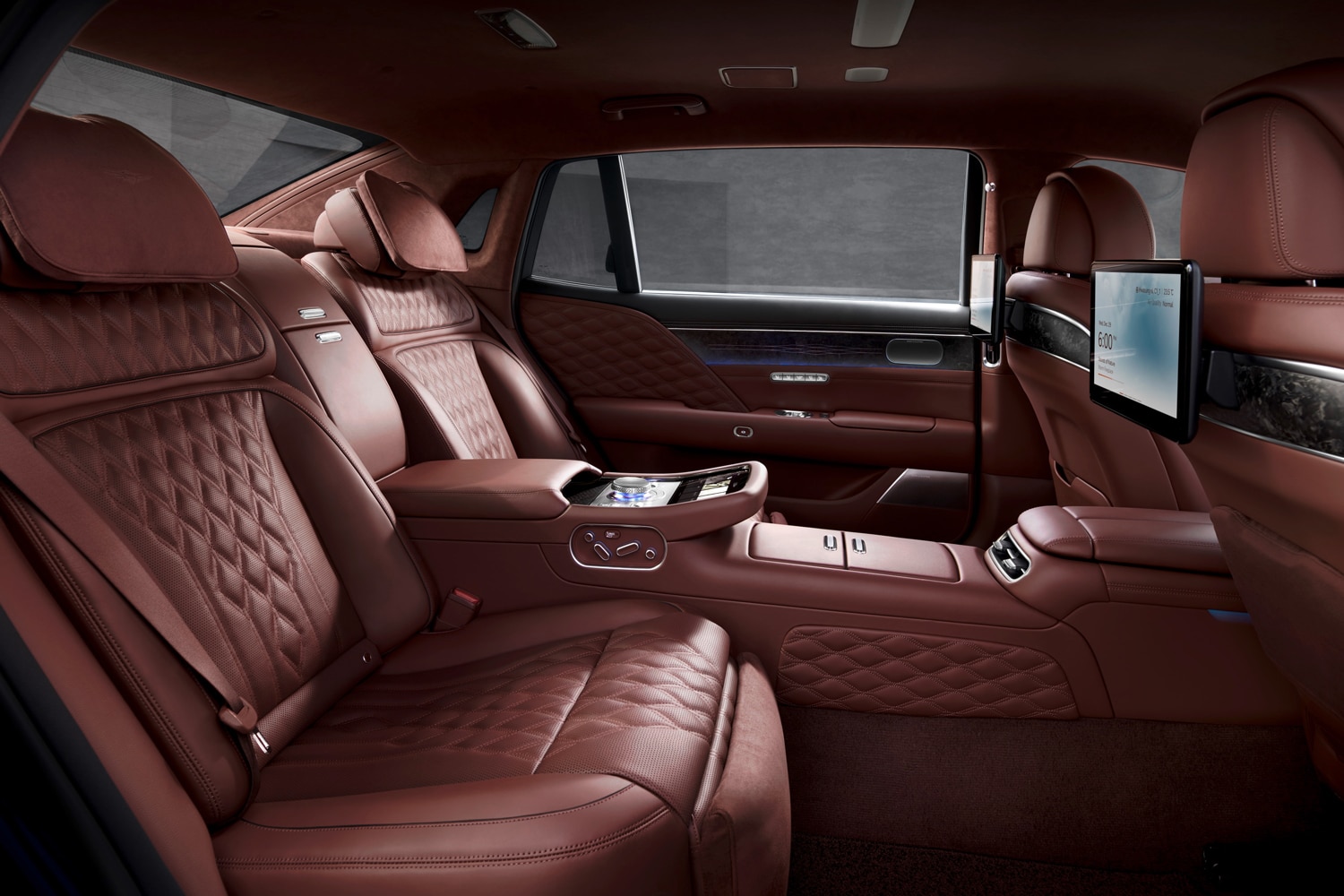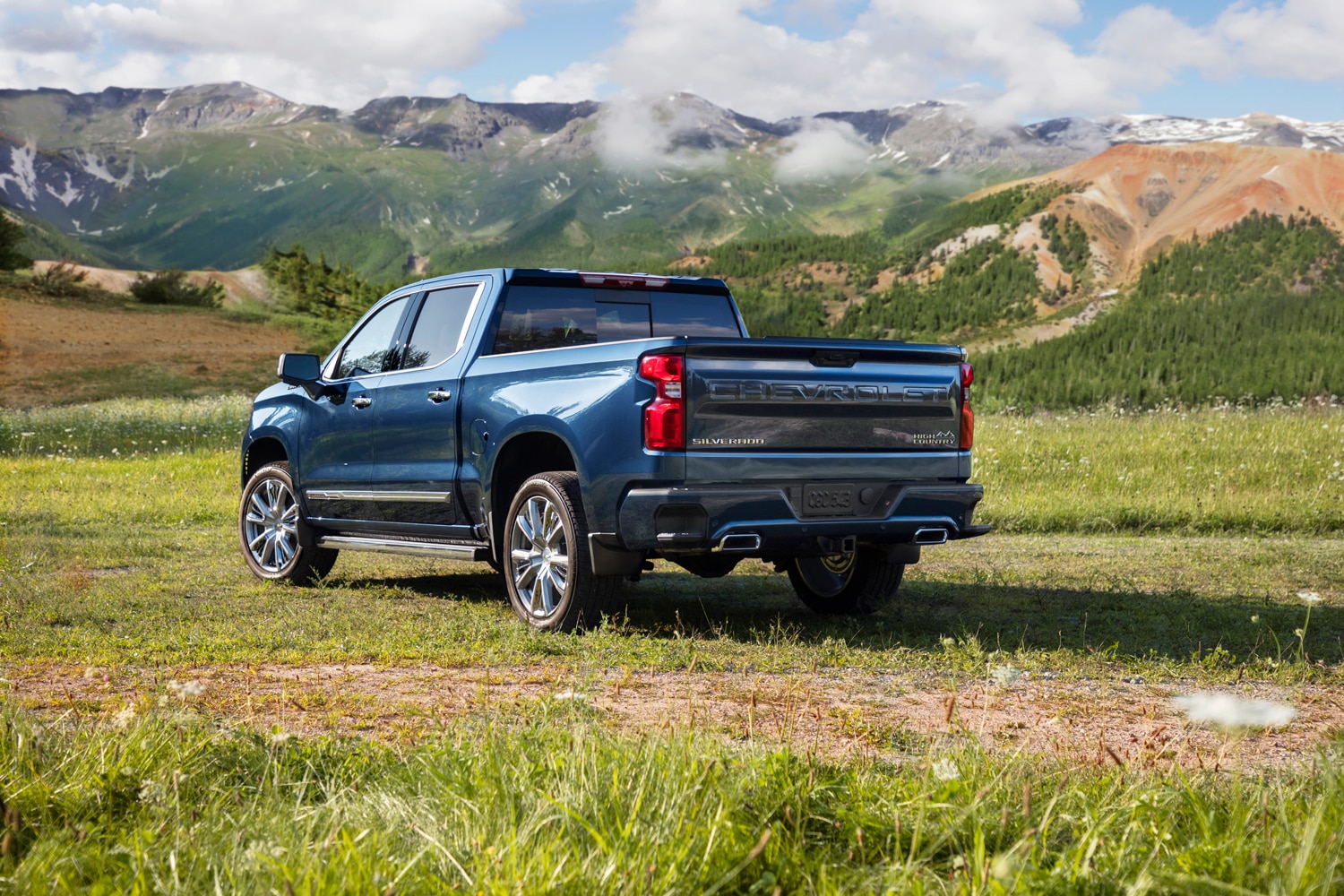Your Next Luxury Car Might Be a Ford
Luxurious products from non luxury carmakers are flooding the market.
Article QuickTakes
Imagine a new car that comes standard with leather-wrapped massaging front seats, a Bang & Olufsen sound system, a 12.0-inch touchscreen infotainment system, a Wi-Fi hotspot, and a $77,530 asking price. If you’re picturing something German, we understand why. But the car in question is a Ford F-150 outfitted in its swankiest Limited trim.
Ford isn’t the only mass-market automaker with expensive, feature-packed vehicles in its lineup. Chevy’s High Country, GMC’s Denali, Mazda’s Signature, and Hyundai’s Calligraphy trims rival the Blue Oval’s Limited line with quality materials (and high prices to match) and plenty of technology that money couldn’t buy 10 years ago. But what does luxury even mean when previously mainstream-brand vehicles are commanding close to six-figure prices?
 Ford
Ford
What Is a Luxury Car Today?
“Luxury is in the eye of the beholder,” says Stephanie Brinley, a principal automotive analyst at IHS Markit. For some customers, it’s about the way a car makes them feel. Those buyers might be swayed by a car from a non-luxury automaker if it’s full of content we’re used to seeing in prestige products: things like leather seats, microsuede trim, a large infotainment display, and advanced safety technology, for instance.
Other buyers are looking for uniqueness. This group includes those who have made Tesla a player in the luxury space. You can’t get quilted leather seats in your Model Y, but you will have a decidedly 21st-century ownership experience in that electric crossover. Tesla pioneered the concept of over-the-air software updates for cars, and though other automakers are starting to catch up, it remains the only manufacturer to allow buyers to replace the boring gauge-cluster animation with Mario Kart’s Rainbow Road. And that’s to say nothing of the hype around Tesla’s semi-autonomous driving technology.
For still others, luxury means exclusivity. Brinley says those buyers “may be aware that a Toyota has similar content as a Lexus, and they’re going to want the Lexus anyway.” And not for nothing: Mass-market brands have improved the technology suites and overall quality of top-trim models in recent years, but traditional luxury automakers have upped their game too. “There’s still a clear difference between Hyundai and Genesis,” Brinley says.
 Genesis
Genesis
As for Hyundai and Genesis, you can actually see the difference in the luxury brand’s much sleeker and more forward-looking exteriors compared with the edgy but less refined designs you’ll find in the mainstream brand’s lineup. Genesis’s cars also feature richer interiors with modern controls and luxury touches you can’t find in a Hyundai.
How exactly are legacy luxury carmakers setting themselves apart? Performance is one form of exclusivity. Mercedes-Benz’s S-class, long a paragon of luxury, offers a 496-hp V8 at the top of the range and, with it, can hit 60 mph in less than four seconds, per Car and Driver testing. That F-150 Limited we mentioned earlier? It comes standard with the same 400-hp V6 engine that you can spec for just $1400 in the Lariat, which is $28,000 cheaper.
Rising Prices Reflect Changing Preferences
According to Kelley Blue Book, in January, Americans paid an average of $46,404 for their new cars; that’s up from $41,248 the previous January and $37,851 in January 2020. Some of the blame for those high prices rests with pandemic-related supply-chain disruptions that have created a shortage of new vehicles and made it easier for dealers to charge above MSRP for new cars. But it also has to do with customer desires.
 Chevrolet
Chevrolet
Americans’ tastes have shifted toward trucks and SUVs in recent years, and those types of vehicles command higher prices than smaller cars. New-vehicle average transaction prices for Ford, General Motors, and Stellantis all notched above $50,000 at the start of the year, thanks partly to the high prices customers are willing to pay for optioned-out pickup trucks. “There’s demand for technology,” Brinley says. And for automakers, “the more electrification that you do, the more safety [features you offer], the more technology you [have], the cost of the vehicle is going to go up.”
There’s a lot of geopolitical drama affecting the oil market at the moment. But Brinley says it’s too soon to say whether a rise in fuel prices (as we saw in early March) will sour Americans’ appetite for big, expensive cars. Automakers have promised to debut a wide variety of EVs in truck and SUV forms, but most of those vehicles are still months or years away from dealer lots. In the meantime, short vehicle supply means more and more buyers are deciding to order their vehicles and wait months for them to arrive, rather than buy and drive them off a lot. That extended wait time means customers can’t react as readily to market forces. “If you’re thinking about buying a Suburban,” says Brinley, “you probably already have an order in.”



